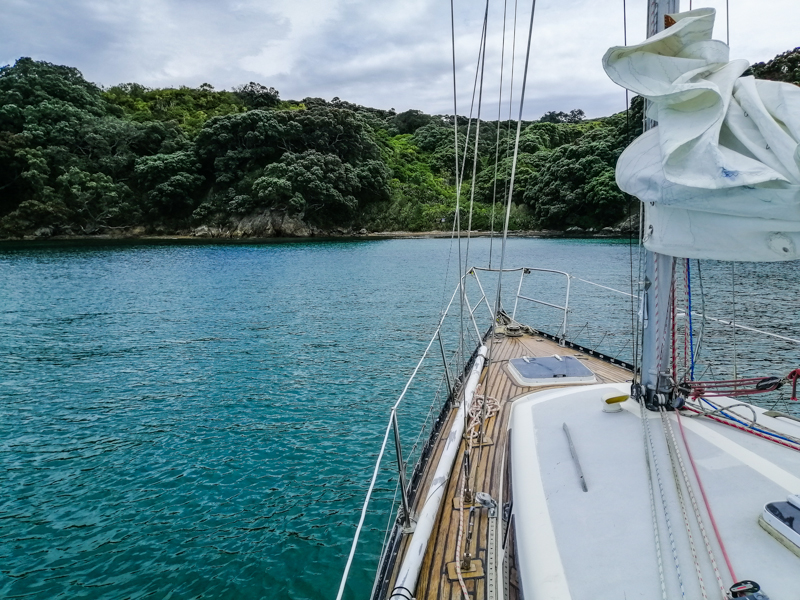
From Ananda Krishna Rajah in Auckland, New Zealand.
Tiritiri Matangi Island is located in the Hauraki Gulf of New Zealand and is
Arriving at the Tiritiri Matangi Island by sailboat, it anchored off Hobbs Beach. Large flowering Pohutukawa trees lined the beach front.
I was greeted with a riot of birdsong as I stepped onto the island. The radiant blue with white feathers under its beak, Tui, flew past as great speed into the flax bush.
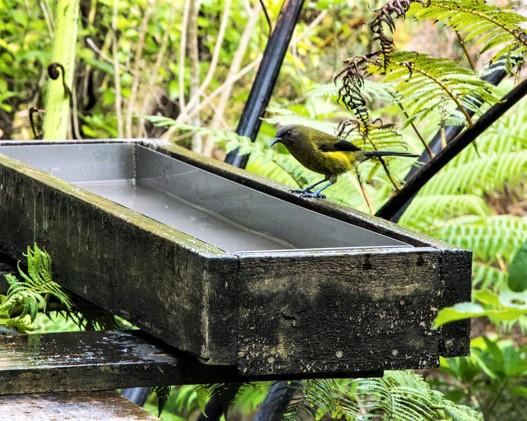
Walking under the canopy covered Wattle Track, a Bellbird (Korimako) drank water from a man-made trough. Through spiky cabbage, flax and crimson flowering Pohutukawa trees, the 1864 light house appeared on top of a hill.
It is one of the oldest and still operational. From here, there are views of Great Barrier, Little Barrier and Waiheki Islands; Rangitoto; Whangaparaoa Peninsula and Central Auckland.
Walking through Cable Track, a pair of nocturnal speckled brown Morepoke (Ruru) were half asleep. On a nearby grassland, I encountered a pair of Red Crowned Parakeets (Kākāriki).
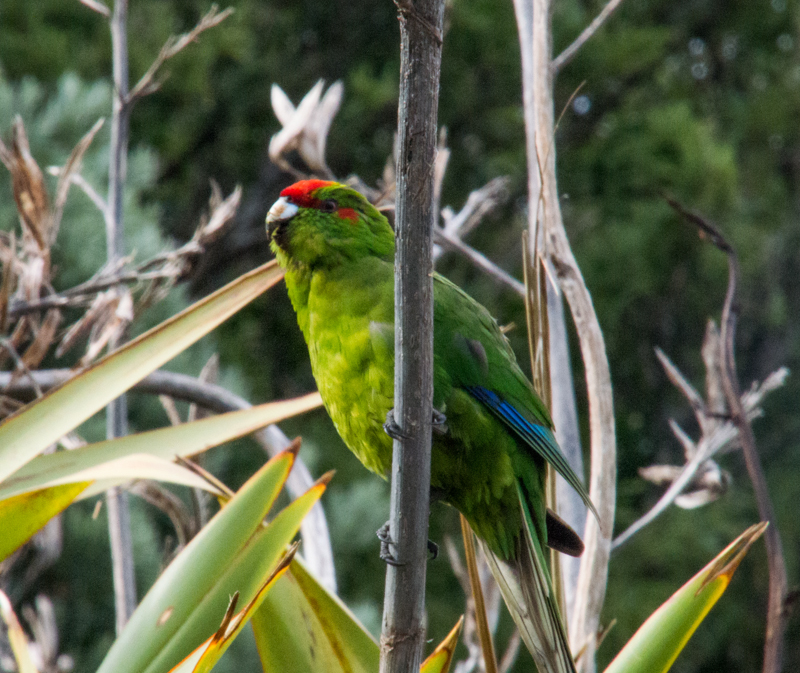
A small bundle of brown darted in and out of the track margins – the introduced Brown Quail. I was easily distracted by all the bird songs coming in all directions. I heard them flying around somewhere in the bush and on the forest floor, but unseen. Under one tree canopy, I spotted of a male Stitch bird (Hihi) and a North Island Robin (Toutouwai).
Along the Totora Track, high on a tree, a bulky New Zealand Pigeon (Kererū) displayed its colorful plumage. Birds came close and unafraid of people. This is a predator free island and they have little fear. On a board walk track, a black and brown North Island Saddleback (Tīeke) was busy scouring the forest floor to feed, just two meters away.
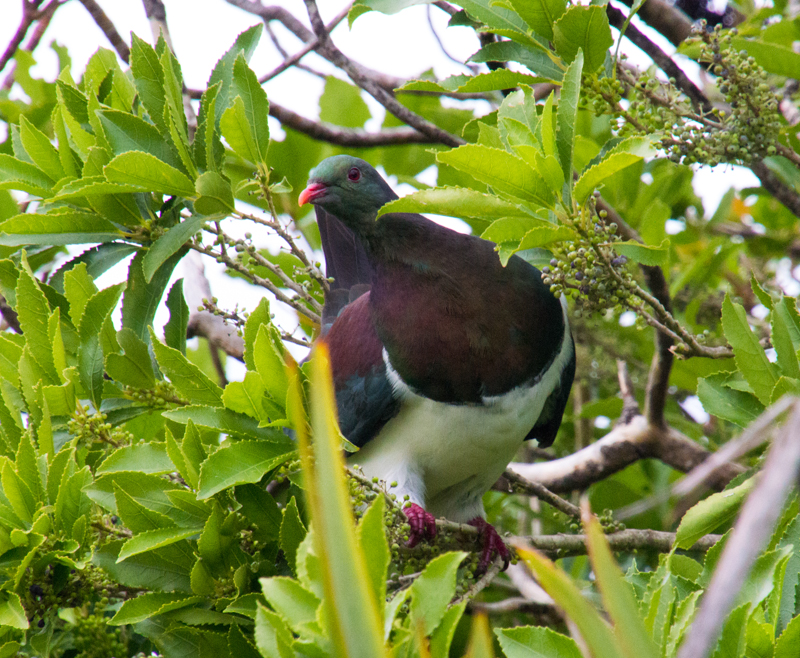
Old twisted trees trunks of the Pohutukawa, barely recognisable as their leaves were hidden above the canopy. A mixture of trees included the Pittosporum and Comprosma species, Kowhai and flowering kanuka trees. The riots of bird calls are dominated and dictated by the Tui.
They are territorial and disturb not only their own kind but all other residents. However, they are wonderful to observe especially at watering stations. At Hobbs Beach, seabirds – the Southern Black-backed Gull and an Oyster Catcher foraged amongst the rocks.
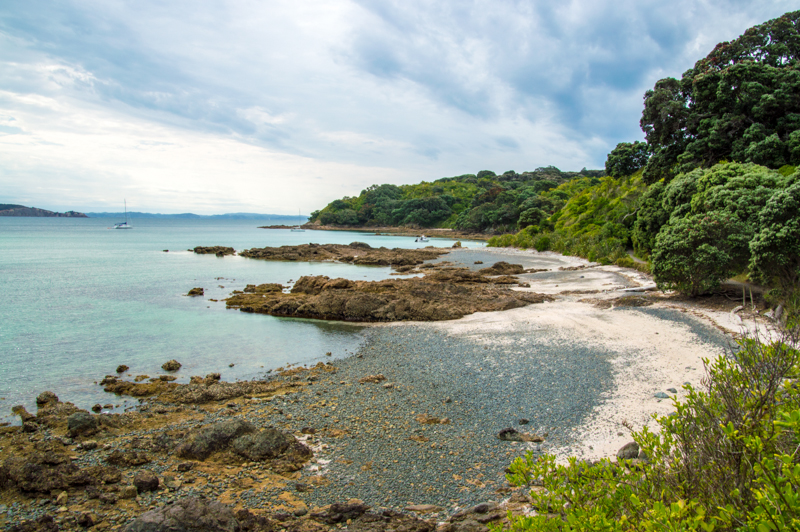
Walking along the tracks gave a sense of tranquility, soothed by melodious bird songs. A chatty group of Whiteheads (Pōpokotea) broke the serenity of the forest.
The is not an ordinary island. If fact, the flora and fauna was decimated through farming by early settlers and introduced predators. Between 1984 -1994, a group of dedicated volunteers rehabilitated the island with over 250000 native plants (60% bush and 40% grassland).
This followed by reintroduction of wildlife. An extraordinary effort. The clatter of wings and bird songs are constant until dusk. In the dark, I walked along Hobbs Beach, Kawerau and Hobbs Tracks to spot the illusive kiwi and blue penguins. Not today though. Around 2230, I sat outside, perhaps optimistic, for a Kiwi to wander out onto the grasses.
Suddenly, I heard the sharp and screeching call of the Kiwi somewhere inside the forest. I was satisfied.

The dawn chorus, next day, begins very early in the dark. The island is not quiet. I head to the East Coast Track. I observed three Tui confronting each other. They headed straight towards me. I ducked and heard their wings flap just above my head.
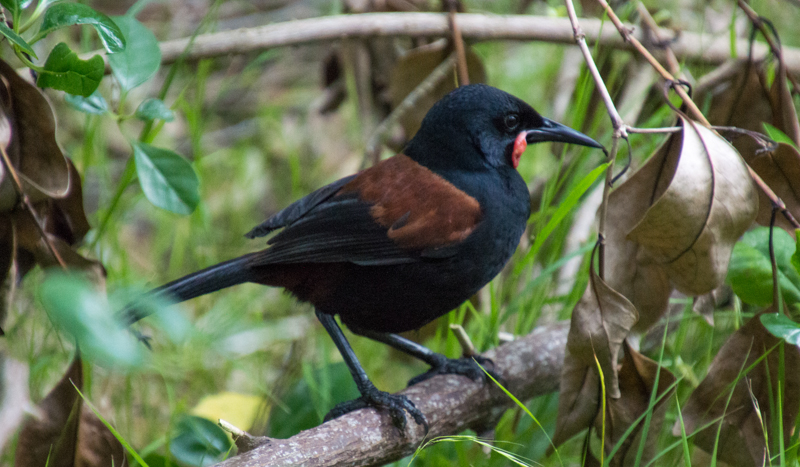
At the craggy Fishermans Bay, the birds were busy foraging. I heard an unfamiliar song. There up on a tree, a pair of rare bluish Kokako with a black mask around its eyes and a blue wattle under its beak.
It is now my favourite bird. Back at the lighthouse, a handsome pair of the rare Takahe, with an amazing iridescent dark blue and olive-green plumage with a red beak, walked casually on the grassland. In tow, a blackish chick. This is an open bird sanctuary with ongoing research. Imagine, this singing 220ha island is just an hour boat ride from metropolis Auckland.

